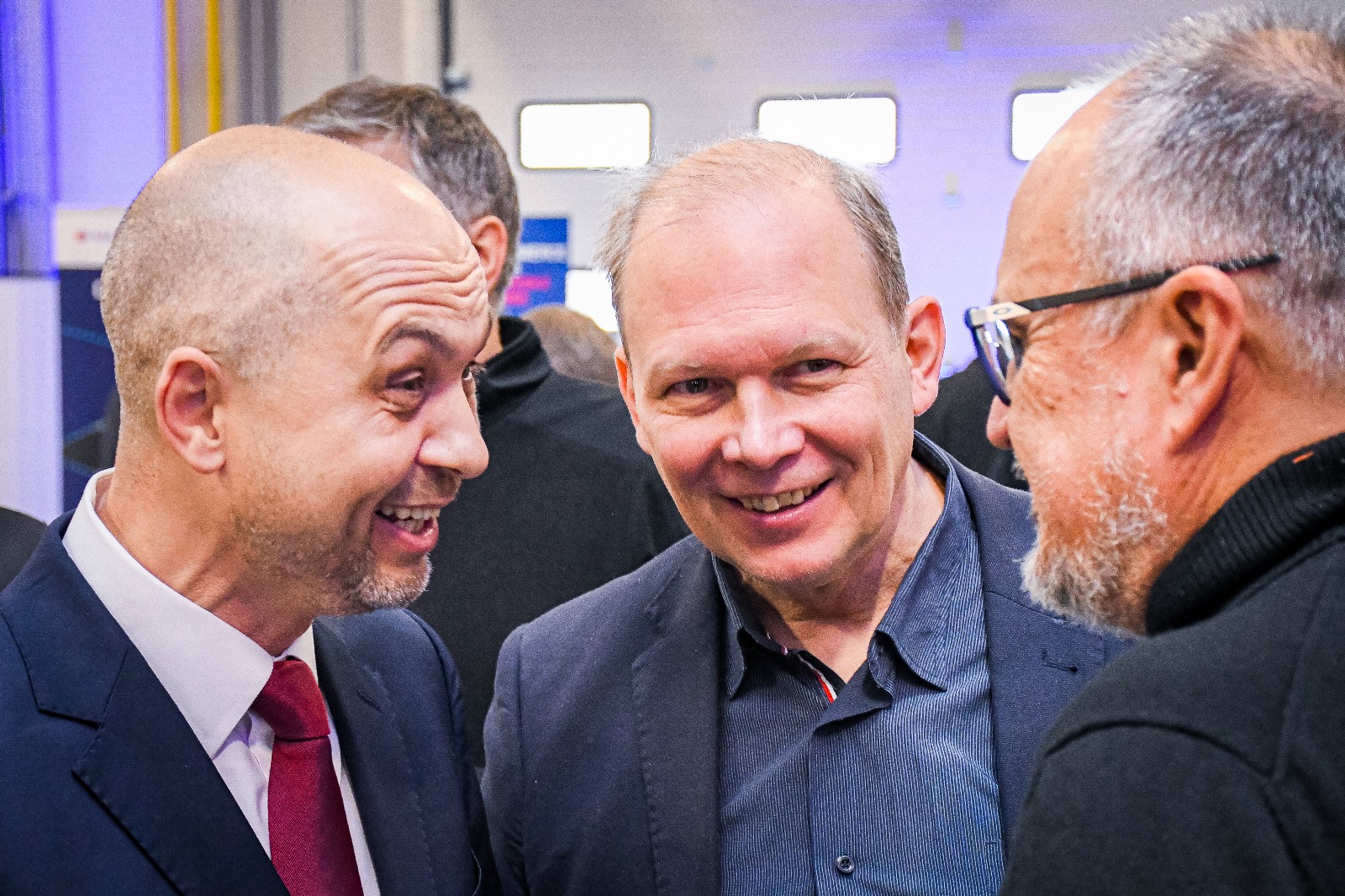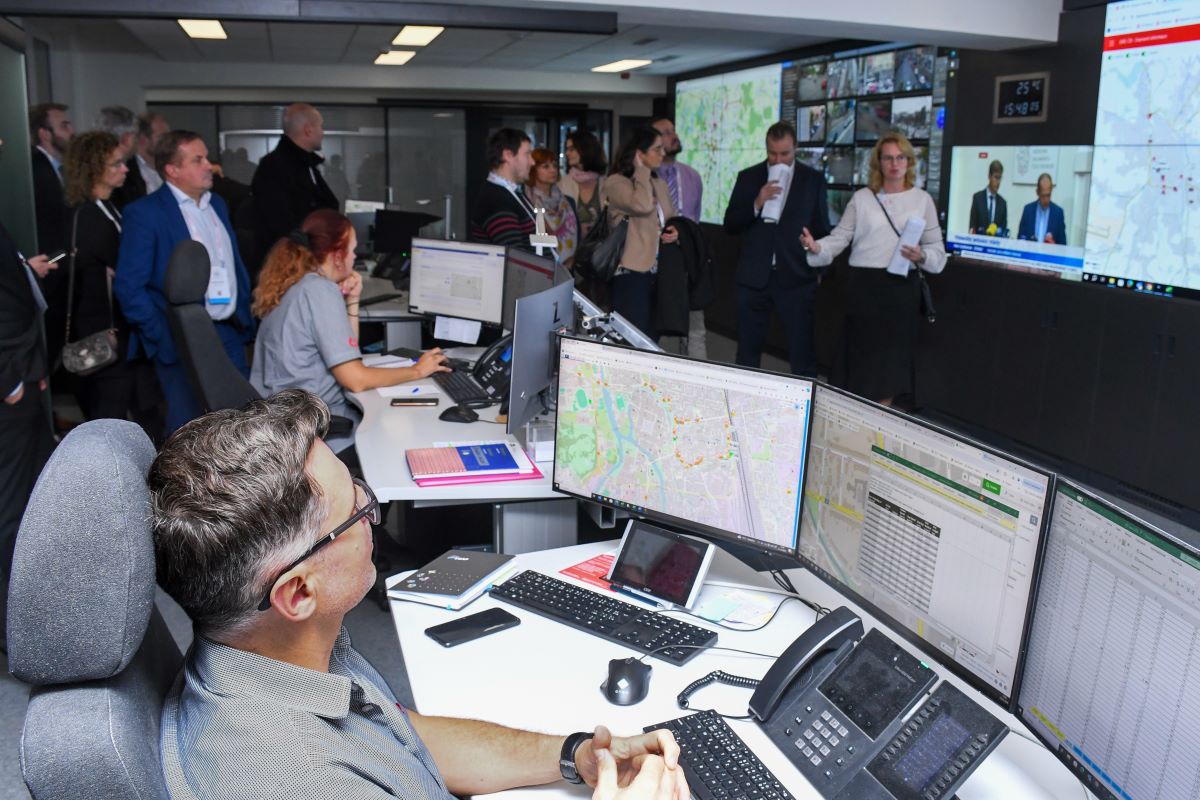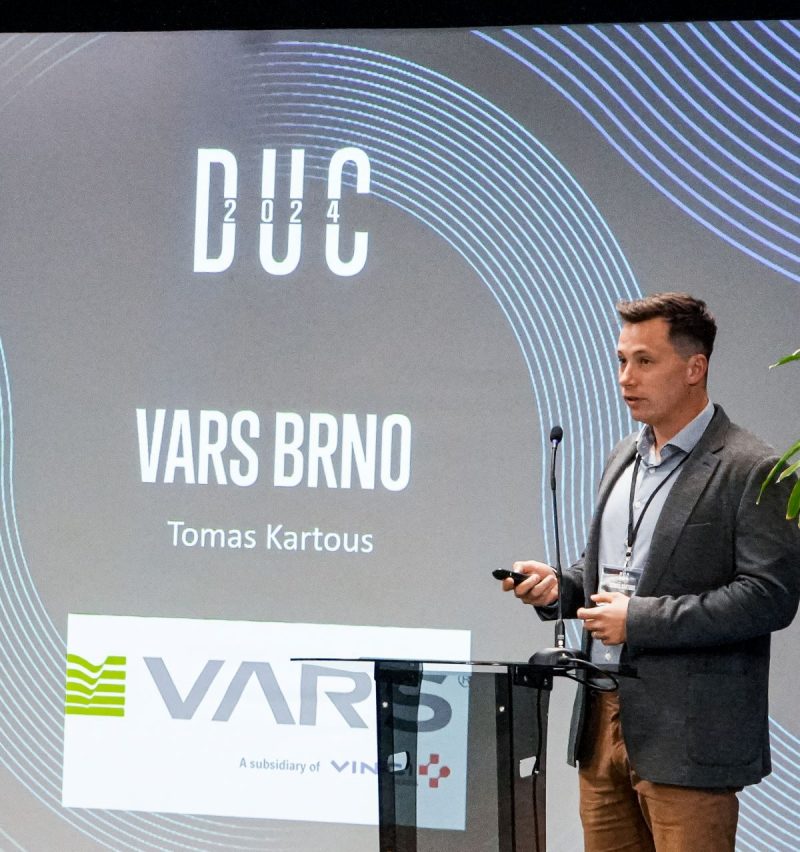
- en
- cs
BIM in communications management: a glimpse into the future
Building Information Modeling, a topic that is currently moving the world of designers, architects and builders, is also closely linked to what VARS BRNO excels in – transport infrastructure and asset management.

Interview
22 January 2024BIM in communications management: a glimpse into the future
Building Information Modeling, a topic that is currently moving the world of designers, architects and builders, is also closely linked to what VARS BRNO excels in – transport infrastructure and asset management.
Building Information Modeling, a topic that is currently moving the world of designers, architects and builders, is also closely linked to what VARS BRNO excels in – transport infrastructure and asset management.
“With our products and solutions, we are present in the design phase and in the further use of BIM as a tool for efficient asset management. After 2023, we also know that this is not an academic debate, but a very concrete trend that is already reflected in current tenders.” says David Novák, Technical Director of VARS BRNO.
How much of a revolution in the design and approach to construction does BIM represent?
This has to be divided into two parts. The first is the design part. At the level of the design community, BIM is seen as a repository of information about the project and the building. But for us, and for what we do, the second level, the life of the building, is more important. In short, what happens to it when it is designed, built and commissioned. Our specialty is infrastructure management. Designing in BIM is an invaluable asset for us in that there is consistent data stored in a common environment and, optimally, a 3D model. This will be a major source of information for us in the future and allows us to fully digitise the management process.
Isn’t BIM actually an alternative to the infrastructure management systems that VARS BRNO is developing?
On the contrary, they complement each other perfectly. In the management systems we develop, it is usually a big problem to fill them with information at the beginning. It is often in different sources, old systems, on papers, in excel spreadsheets. Or they don’t exist at all and have to be created. This means that somebody has to go round all the assets that need to be managed, register them, locate them and so on. And this is avoided with BIM.
So what will be the role of VARS BRNO in BIM?
We are present at all stages. In design we offer tools from Bentley. But the bigger challenge is to be able to handle the information in the model, to have that technical and legislative knowledge, to be able to grasp it, to manipulate it. And the most important thing is to offer a management system for that. Being able to grab the input, import it into our system, set up the processes and hand over to the client’s live infrastructure management system.
When will such systems emerge? How quickly does VARS BRNO need to adapt to them?
It is already happening. Already at the end of last year, we submitted a concrete offer for VIA SALIS, our sister company from the VINCI Concessions group, which was awarded the concession to operate the D4 motorway. Its condition on the part of the contracting authority, the Ministry of Transport, is the obligation to have a BIM model and to keep it up to date throughout the operation of the construction. If we win this contract, it will be an absolutely pioneering feat. There is no similar system here. And this concession seems to show what the conditions for similar constructions will look like in the future.
So what might such a solution look like for VIA SALIS?
The principle of the solution that we offer, and it’s an important principle, is the intercommunication between the stored BIM model and our asset management system. Any change that occurs on either side that means a change in attributes is automatically written into the other system as well.
The BIM is the base to which we add more information, we import all of that into the asset management system where everything lives and if there is any change to the attributes copied from the BIM, it is updated there as well. The same is true in reverse – if there is a significant change in the BIM, for example, replacing a guardrail with a different type, it is projected into the BIM, from where it is imported into asset management.
How does the asset management platform from VARS BRNO work?
Firstly, our platform is able to define individual objects on the infrastructure and the structure of attributes, information and documents that relate to that particular object. On top of that, it can then maintain certain processes, generally speaking. We can illustrate this with the example of, for example, a damaged bollard. Once the damage occurs and someone reports it, a certain repair process is started, at the end of which it is restored to its original state. Other processes then relate to maintenance – the railings on the bridge have to be painted every year, the grass has to be cut every two weeks. The maintenance manual should be part of the documentation of the actual execution, but it is not machine-readable. This should change with BIM. We can then import such a list of periodic activities into the system, making the whole process come alive and allowing road managers to see what is due when.
The key to all this is that the output from BIM should be standardised in some way.
Yes, that’s the point. Without that, it will never work. It has to be said that even in this it will eventually be a pioneering venture, because at the moment the BIM model for documenting actual performance, not design documentation, is not standardised. The VIA SALIS contract will also be exceptional from this point of view. Whoever develops the BIM model will be blazing the trail.
Is there a professional platform that deals with BIM?
At the level of overlapping into the operation of the building, i.e. what we are most interested in, nothing much is being done yet. Everything is focused on the design and eventually permitting phase of construction. However, this has stalled on the delay of the digitalisation of construction management, which is still a few years away.
How is BIM anchored legislatively?
Prospectively, there will be a law that will clearly define that large buildings above a certain budget must be designed in BIM. But it is not clear what this will mean in concrete terms. In short, our customers will have a BIM model and we want to show them how they can bring it to life effectively and save a lot of work that would otherwise be spent collecting data in the field and evaluating it. BIM is a big shift in the design phase as well, but with our solution we’re taking it a few steps further.
How does the Czech Republic compare to other countries?
I think the situation is very similar. Globally, there are players like Autodesk and Nemetschek who are influencing the topic a lot. In Germany, there is also a relatively strong representation of smaller local suppliers who can make their products work in such a large market. Here, the market will probably always be tied to the big vendors, including Bentley Systems, which we represent. But in the asset management sector, we want to be at the cutting edge of development, working with our own know-how and creating a competitive advantage.
Read more
INTERVIEW





